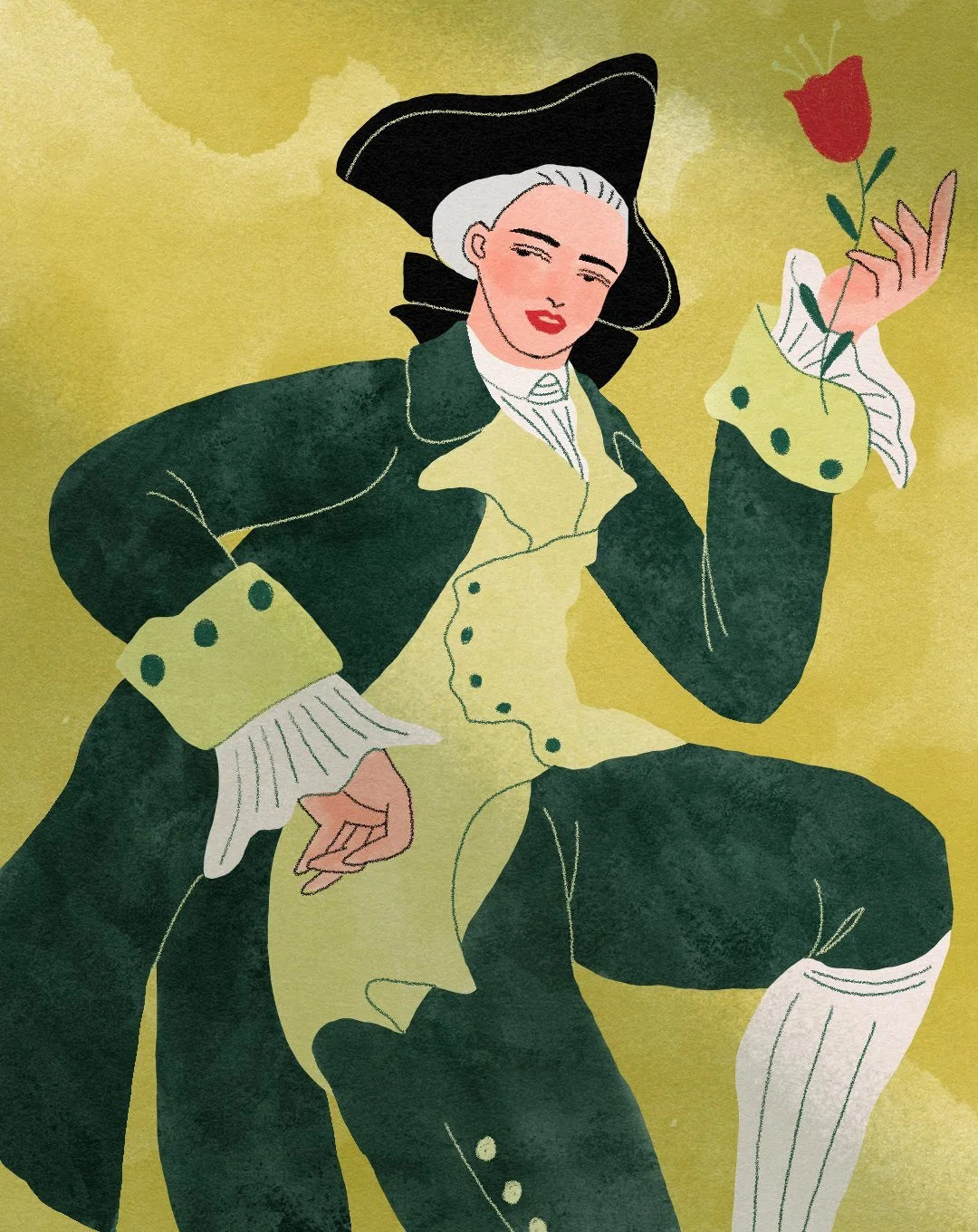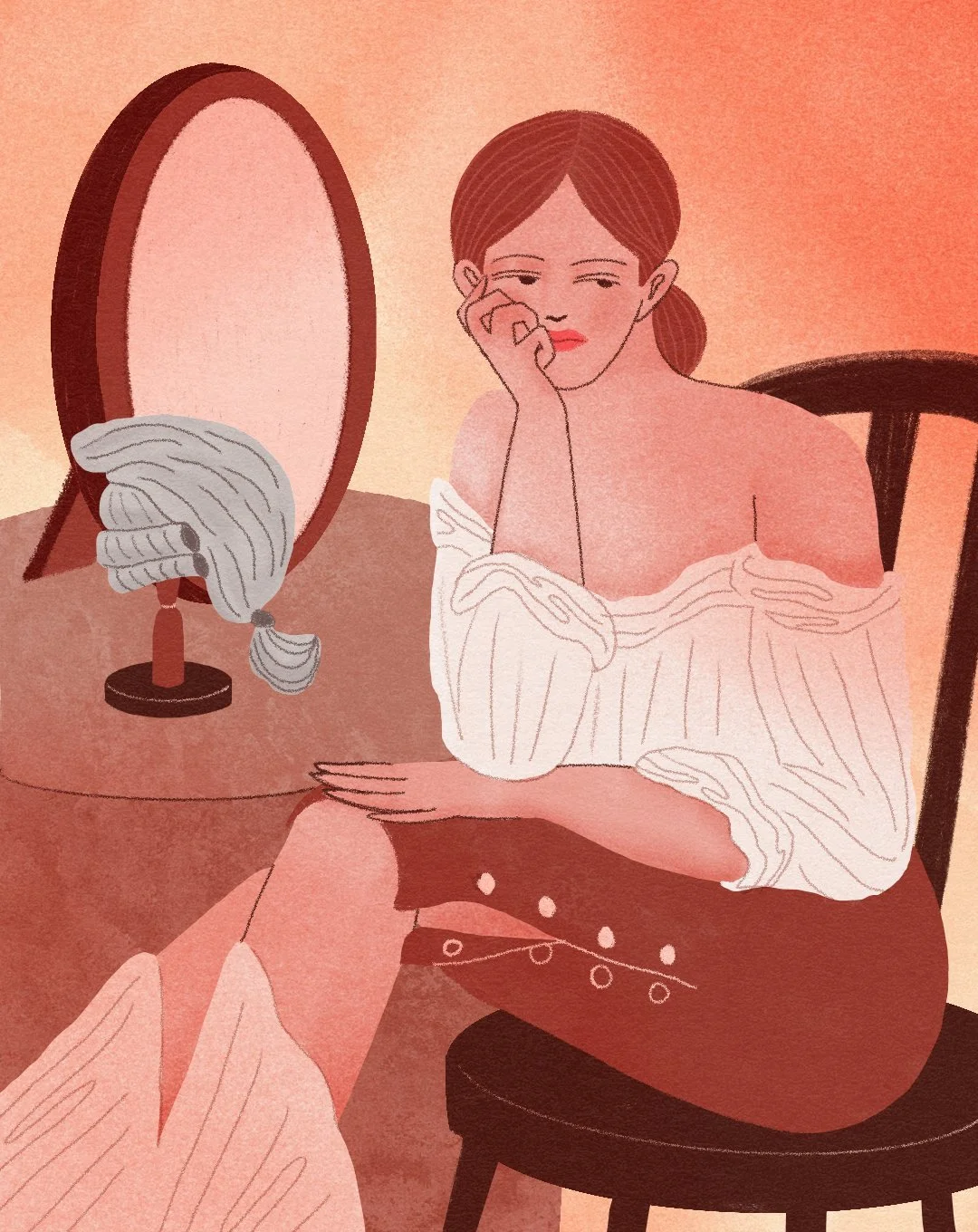Dressing Dykes: The History of the Lesbian Drag King, Part 1
Make it stand out
It’s a common misconception that drag is a new phenomenon, but the history of drag can be traced back hundreds of years. The role of the drag king - these days, far less talked about than drag queens, and undeservedly so - has a long lineage, stretching back to travelling troupes of performers in the 1950s and 60s, the music hall of the 1900s and the stages of the 18th century. The thing that binds these stories together is the clothes worn on the bodies of these performers. Though we can never be sure of the gender or sexual identity of historical figures, particularly when they moved through the world in as non-normative a way as those I’m about to list, there’s a strong connection between drag king history and lesbian fashion history.
In these stories, clothes become not just fabric but opportunity, trousers or breeches become not just two-legged garments but a symbol of freedom. A woman - or someone understood as a woman by the society around them - couldn’t dress in men’s clothing unless she had certain protections, such as the possession of immense wealth and an uncontestable social station. Barring this, a cross-dressing woman (who we could now read as a trans man) would need to live a full-time male lifestyle and be able to “pass” as a man. There was one alternative to either of these circumstances: all the way back in the 1700s and up to relatively recently, the one scenario where cross-dressing has been accepted by the general public is for that public’s entertainment.
So, let’s wind back the clock to the beginning and trace this history. “Breeches roles” became popular in the 18th century, with women playing men or boys in theatre or opera. A popular player of early “breeches roles” was Margaret Woffington (1720-1760). She was, apparently, equally attractive to male and female audiences, though for different reasons. There’s even a poem about Woffington, that announces how when she wore breeches “The Men grew envious, and the Women loved.” Women loved her in breeches - I don’t know about you, but that seems pretty gay to me.
Mademoiselle de Raucourt by Sigmund Freudenberger, 1772. Musée Carnavalet.
As breeches roles were relatively common, it’s unlikely that all cross-dressing actresses were lesbians, or women-loving-women. I would argue, though, that a fair amount of them would have been. This is because the stage was a space where lesbians could exist freely, where they could dress in a non-normative way and express desire for other women. They were protected by the heavy curtains of the theatre and the belief that it was just a role that they played.
Sometimes their reputations didn’t get away unscathed. One of the most famous cross-dressing women of the eighteenth century was Mademoiselle de Raucourt (1756-1815), a star of the Parisian stage. The first time she appeared on stage was in 1772 (not in a breeches role), and she was immediately admired for her talent as well as her beauty. However, her public purity soon faded, in conjunction with her rising reputation as the “young priestess of Lesbos.” This reputation was garnered through her tendency to wear men’s clothing off the stage as well as on it.
Raucourt’s story is long and complex, intertwined with the French Revolution. She appears in pamphlet after pamphlet between 1789 and 1799 as a figurehead of Parisian lesbians – a community scorned by many revolutionaries as counter-revolutionary. For these revolutionaries, homosexuality was a result of aristocratic privilege. Depictions of cross-dressing became a shorthand used to scorn Raucourt and others like her. One publication, Chronique arétine, reported in 1789 that she was seen leaving the home of a female lover “disguised as a man, after having attempted to fulfill that role with her loving mistress.” If she’d just been wearing men’s clothing for the public’s entertainment, that would be one thing - but to wear them for herself and for the enjoyment of another woman was unacceptable. This meant that when Raucourt cross-dressed on stage for the role of a countess disguised as a soldier in her self-written play Henriette she was met with heavily critical reviews. She was flaunting her lifestyle too loudly.
Despite this widespread criticism, the French public was obsessed with Mademoiselle de Raucourt… and she was far from the only cross-dressing women to capture their imagination. See for example Giovanni Bordoni (1718-1743), who was born and posthumously known as Catterina Vizzani. Here’s the rundown: Catterina was born in Rome, and at age fourteen fell in love with a girl – Margaret – who was teaching her embroidery. She began wearing male clothing in order to court Margaret. Once their relationship was discovered, she fled, assuming the name Giovanni Bordoni. Giovanni (I’ll now use he/him pronouns, as he would have in life) began working as a vicar’s servant in Perugia, where he was supposedly “the best seducer of women in that part of the country.”
Some years later, and in another city, Giovanni fell in love with another girl. The pair planned to elope. They were discovered while travelling, and Giovanni was shot in the leg, despite being in the midst of surrender. His wound turned gangrenous, and Giovanni spent the end of his life in hospital, having to remove the “leather contrivance” that he had worn fastened below his abdomen because of the pain.
Giovanni wasn’t a drag king, or a male impersonator of any sort. However, he still became a celebrity. It was after Giovanni’s death that another Giovanni – Giovanni Bianchi, a surgeon and professor of anatomy – conducted an autopsy on the body and published The True History and Adventures of Catherine Vizzani (English translation). This publication flung Giovanni/Catterina into the public eye, and cross-dressing was conflated with lesbianism just as it would be with Mademoiselle de Raucourt, the “priestess of Lesbos,” a couple of decades later. In the English introduction of The True History and Adventures of Catherine Vizzani, translator John Cleland writes that Giovanni was “so far from being inferior to Sappho, or any of the Lesbian nymphs, in an attachment for those of her own Sex”. Let me translate the translation: “she was a lesbian.” This lesbian image continually went hand-in-hand with cross-dressing, in Giovanni’s story and others similar to it.
“They were protected by the heavy curtains of the theatre and the belief that it was just a role that they played.”
Yes, there are more. Mary/Charles Hamilton is another person who, raised as a woman, assumed the identity of a man through clothing in the 18th century. Though we know little about the real events of Hamilton’s life, there’s a mostly-fictionalised biography of it written by Henry Fielding, called The Female Husband. The story travels through the twists and turns of Hamilton’s would-be life, including three separate marriages to women. The expression of Hamilton’s gender and the implied lesbian sexuality that comes with these three marriages were innately tied up with clothing and cross-dressing. This narrative was eaten up by Fielding’s readers, and continued to be so in other publications like The Life and Adventures of Mrs Christian Davies (1741) and The Female Soldier (1750).
The first historical performances by lesbian drag kings of the past weren’t always on stage, also appearing in pamphlets or stories. Despite this, the figure of the cross-dressed woman, the male impersonator or the “female husband” was a wildly popular one throughout the 18th century. These people and the clothes on their bodies were the precursors to the hundreds of years of drag king history since, all the way up to today. This was just the beginning of the story, but it’s one directly connected to the drag culture, fashion and queer communities around us now.
Words: Ellie Medhurst | Illustrations: Niu Cheni




